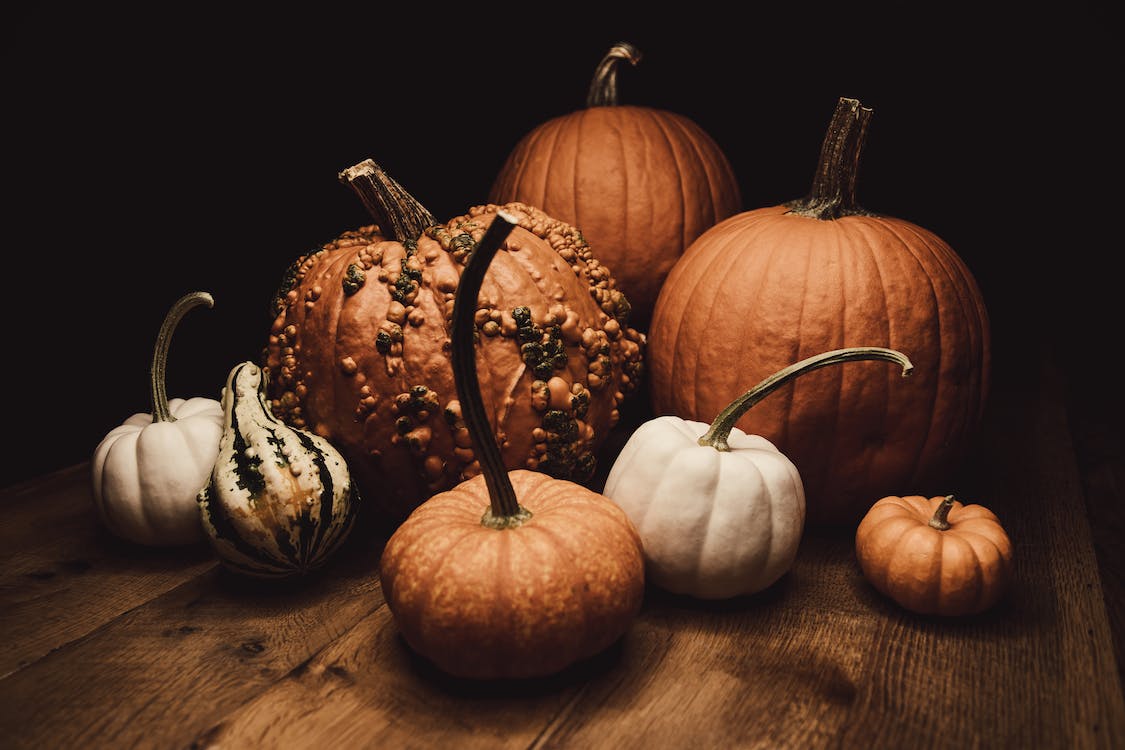Choosing a pumpkin from the dozens of orange beauties now on sale in markets and shops is not easy: big and small, round, elongated, pear-shaped, in many different shades. Some are tasty, others not so much. How can you tell which pumpkin is best?
How to choose a good pumpkin?
A good pumpkin has a thick skin, but not a “wooden” one. Of course it should be free of cracks, soft spots and dark spots. The latter are indications that the pumpkin has started to rot. When choosing a pumpkin, don’t go for giant ones. Pumpkins that are too large and overgrown can have a dry, watery and bitter flesh.
A ripe pumpkin has a dark and dry tail. If there is no tail it’s better not to buy it, the seller probably got rid of it on purpose, as the fruit was ripe too early and didn’t have enough time to ripen. In addition, even the best pumpkins without a stalk will have a much shorter shelf life.
Pumpkins “affected” by fungal diseases will have very unpalatable and bitter flesh. Dents and dark or pinkish spots on the skin can also indicate a probable infestation. Also often unscrupulous vendors will cut off the diseased areas – and sell the pumpkin in pieces.
Which pumpkin is better? It all depends on what to make from it and how long you intend to keep it. There are three types of pumpkin most commonly found on markets and in shops: hard-shelled, muskmelon and large-fruited. There are also ornamental ones, but they are not usually suitable for eating.
There are dozens of pumpkin varieties at the market.
The muscat variety is considered by many to be the best and tastiest.
Muscat gourds have an elongated shape, can resemble a large courgette, overgrown cucumber or giant pear and have thin skins that are easy to cut with a knife. Pumpkins of this species often thicken closer to the flower, where the seeds are concentrated. muscat pumpkins are the sweetest, so they are ideal for baking and desserts. They are also particularly high in carotenoid vitamins.
All in all, the best pumpkin in many people’s opinion, if it were not for one “but”: muscat varieties store less than others, and the longer they lie, the less sweetness and vitamins remain in them. Once they’ve been stored over the winter, they’re unsweetened.
Choosing a large-fruited pumpkin
The main distinguishing feature of a large-fruited pumpkin is its round, flattened shape. This is exactly the kind of pumpkin that most of us picture when it comes to Halloween.
The rind of a large-fruited pumpkin is most often bright orange, but it can also be yellow, grey or green. Large-fruited pumpkins are better if you buy them in advance: they store for a long time and only taste better as they lie in storage. The pumpkin that has just been harvested has a lot of starch, but with time it turns into sugar. Pumpkins with large fruits can be stored until spring.
The thicker the skin, the longer the pumpkin will keep.
The hard-skinned pumpkin has an egg-like shape, its skin is usually greenish and, as its name suggests, very hard and difficult to cut.
Another sign that helps to recognize pumpkins is that the stalk of the pumpkin has a peculiar edge and looks like a star. This type is not sweet at all. This kind of pumpkin is better suited for meat dishes and side dishes, where too much sweetness spoils the taste. It does not keep well. But the pumpkin has the healthiest and tastiest seeds and is very easy to peel. There is a variety called ‘Voice Seeded’ that does not need to be peeled at all.

